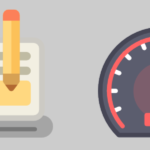Maximizing Website Performance: Speed and Optimization Tips

Enhancing User Experience and SEO Ranking with a Lightning-Fast Website
In today’s digital age, your website is often the first impression potential customers have of your business. It’s your digital storefront, and its performance can significantly impact your online success. Slow-loading websites not only frustrate visitors but can also harm your search engine ranking. In this comprehensive guide, we’ll explore the importance of website speed and optimization, providing actionable insights and the latest trends to help you ensure your website is performing at its best.
The Need for Speed: Why Website Performance Matters
Imagine this: You visit a website, excited to explore its content or make a purchase, only to be met with sluggish loading times. Frustrating. This scenario isn’t unique—it’s one that countless users encounter daily. Let’s delve into why website performance is paramount.
User Experience Matters
First impressions matter in the digital realm. A slow-loading website can turn potential customers away before they even get a chance to see what you offer. On the other hand, fast-loading pages create a positive user experience and increase the likelihood of visitors staying and engaging with your content.
Actionable Insight: Regularly test your website’s speed and performance using tools like Google PageSpeed Insights or GTmetrix. Identify areas that need improvement.
SEO Impact
Search engines, like Google, consider website speed as a ranking factor. A slow website can hinder your SEO efforts, making it more challenging for your site to appear in search results. A fast website, conversely, can boost your SEO ranking, increasing your visibility to potential customers.
Actionable Insight: Optimize your website’s performance to improve your SEO ranking and attract more organic traffic.
Key Tips for Maximizing Website Performance
Now that we’ve established why website speed and optimization are crucial let’s dive into actionable insights to help you achieve peak performance.
Image Optimization
Images are often a significant contributor to slow-loading websites. Compress and resize images before uploading them to your website. Use appropriate file formats (e.g., JPEG for photographs, PNG for graphics) and employ lazy loading to load images only when they become visible on the screen.
Actionable Insight: Consider using image optimization tools or plugins to streamline this process automatically.
Minimize HTTP Requests
Each element on your webpage (images, stylesheets, scripts) requires a separate HTTP request. Reducing the number of requests can significantly speed up your site. Combine multiple CSS and JavaScript files into one, and use browser caching to store frequently used resources locally on users’ devices.
Actionable Insight: Audit your website’s elements and scripts to identify opportunities for consolidation.
Content Delivery Networks (CDNs)
CDNs distribute your website’s content across multiple servers worldwide, reducing the physical distance between users and your data. This leads to faster loading times, especially for users in different geographic locations.
Actionable Insight: Invest in a reputable CDN service to improve global website performance.
Trends in Website Speed and Optimization
As technology evolves, new trends emerge to further enhance website performance. Here are a couple to watch for:
Core Web Vitals
Google introduced Core Web Vitals as a significant ranking factor. These metrics focus on user experience by measuring aspects like loading performance, interactivity, and visual stability. Prioritize optimizing your website to meet Core Web Vitals standards.
Mobile Optimization
Mobile devices account for a significant portion of web traffic. Ensuring that your website is responsive and optimized for mobile is essential for providing a seamless experience to users on smartphones and tablets.
The Path to Website Performance Excellence
To wrap up, let’s recap the essential takeaways for maximizing website performance:
Regular Monitoring
Constantly monitor your website’s performance using tools and analytics. Regular checks can help you catch and resolve issues promptly.
User-Centric Approach
Always keep the user experience in mind. Make design decisions and optimizations with the end user in focus.
Continuous Improvement
Website performance is an ongoing process. Stay updated on the latest trends and technologies to ensure your website remains fast and optimized.
Conclusion
Website speed and optimization are not optional; they’re fundamental to your online success. You can maximize your website’s performance by prioritizing user experience, adhering to SEO best practices, and staying abreast of emerging trends. A fast, responsive website not only delights visitors but also boosts your search engine ranking, ultimately leading to greater online visibility and success. So, start optimizing your website today and reap the benefits of a high-performing digital presence.






